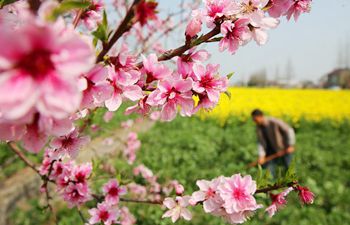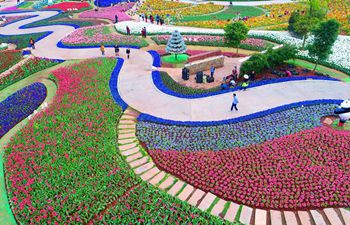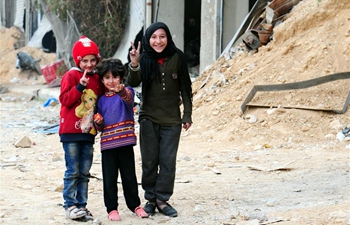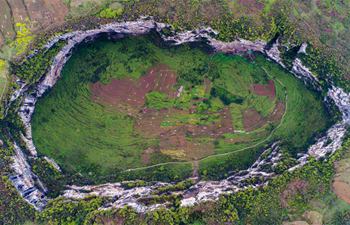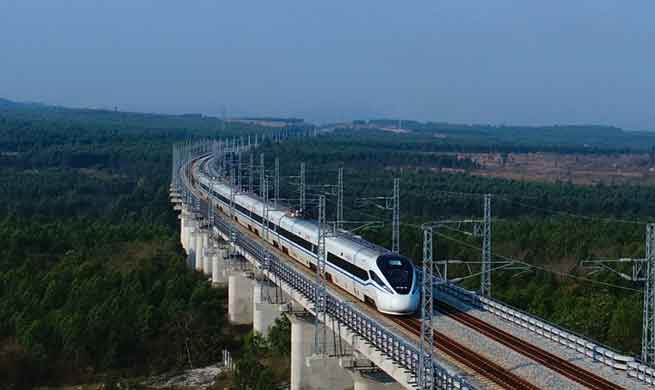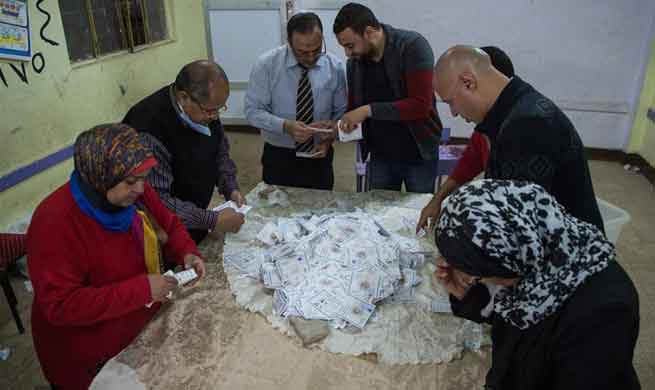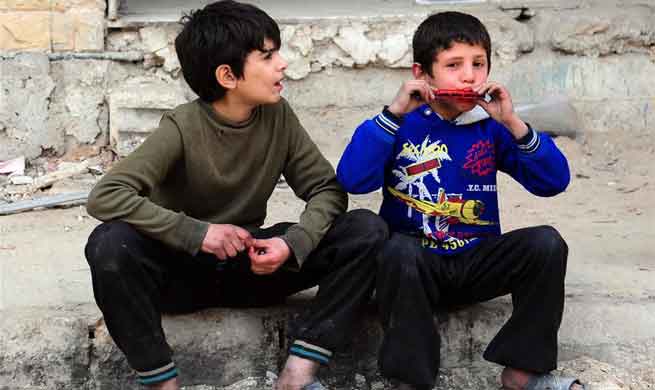DAMASCUS, March 29 (Xinhua) -- Around 163,000 rebels, their families, as well as other civilians have evacuated the Syrian capital Damascus' Eastern Ghouta since the process of evacuation started in mid-March, according to estimates accumulated from official media reports.
Around 24,725 rebels and their families have so far been evacuated from central areas in Eastern Ghouta towns toward the rebel-held areas in Idlib province in northwestern Syria since Saturday, just a couple of days after 3,000 rebels and their families evacuated Harasta city in the eastern part of Eastern Ghouta toward Idlib.
Harasta marked the first evacuation of rebels and their families toward Idlib, after the Ahrar al-Sham rebels, who were in control of that area, agreed to leave, which seemingly encouraged the Failaq al-Rahman rebels to withdraw from central towns in Eastern Ghouta, namely Zamalka, Arbeen, Jobar and Ayn Tarma.
While Harasta has been completely cleared of rebels, the evacuation process of the areas in central Ghouta is ongoing.
The evacuation of rebels and their families was reached through deals mediated by Russia, following the advance of the Russian-backed Syrian army in Eastern Ghouta, which was sliced into three sections to facilitate the military operation that has begun late last month.
After capturing large swathes, the rebels succumbed and accepted to leave from the majority of the towns, leaving only the Douma district, in the northern part of Eastern Ghouta.
Douma, which is under the Islam Army control, is so far out of the currently-established deals of evacuation in other areas in Eastern Ghouta, amid reports from the state media and from the group itself that the Russians are running rounds of negotiations with the group to reach a settlement for the situation in Douma.
Douma is the largest areas in Eastern Ghouta and the most densely populated one. The Islam Army there is also keeping in custody thousands of government loyalists who have been kidnapped in the early years of the crisis and their release is part of the negotiation process.
Recent reports said the Islam Army was about to release 3,500 people kept in its prison, but their release has been postponed possibly until a deal with the government through Russia is established.
A day earlier, opposition activists said the Syrian forces were sending reinforcements around Douma to practice pressure on the rebels.
While the kidnapped soldiers and civilians are still in the captivity of the Islam Army rebels, the Failaq al-Rahman, which is currently evacuating central towns of Eastern Ghouta, has released around 36 kidnapped soldiers so far while their evacuation was ongoing.
In other areas in Eastern Ghouta, civilians kept evacuating toward government-controlled areas on the outskirts of Eastern Ghouta to be placed in shelters run by the government after fleeing the rebels' control.
State news agency SANA Thursday placed the number of civilians that have left toward government-run shelters and areas at 135,000 civilians, who started leaving areas in Eastern Ghouta on March 14.
By looking at the numbers, the people who are evacuating to the government areas surpass the people who are leaving with the rebels and reject to reconcile with the government.
The government has for long maintained that the rebels were taking the civilians as human shields and prevent them from leaving, but after the advance of the army, humanitarian corridors were opened and people kept fleeing and this process is still ongoing.
Eastern Ghouta, a 105-square-km agricultural region consisting of several towns and farmlands, poses the last threat to the capital due to its proximity to government-controlled neighborhoods east of Damascus and ongoing mortar attacks that target residential areas in the capital, pushing people over the edge.
Four major rebel groups are currently positioned inside Eastern Ghouta, namely the Islam Army, Failaq al-Rahman, Ahrar al-Sham, and the Levant Liberation Committee, known as the al-Qaida-linked Nusra Front.





